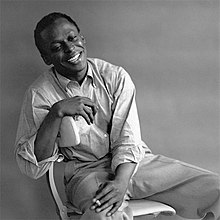Piano Sheets > Miles Davis Sheet Music > So What (ver. 1) Piano Sheet
So What (ver. 1) by Miles Davis - Piano Sheets and Free Sheet Music

About the Song
"So What" is the first track on the 1959 Miles Davis album Kind of Blue. Miles Dewey Davis III (May 26, 1926 – September 28, 1991) was an American jazz trumpeter, bandleader, and composer.
Widely considered one of the most influential musicians of the 20th century, Davis was at the forefront of almost every major development in jazz from World War II to the 1990s: he played on various early bebop records and recorded one of the first cool jazz records; he was partially responsible for the development of hard bop and modal jazz, and both jazz-funk and jazz fusion arose from his work with other musicians in the late 1960s and early 1970s; and his final album blended jazz and rap. Many leading jazz musicians made their names in Davis' groups, including: Joe Zawinul, Chick Corea and Herbie Hancock, saxophonists John Coltrane, Julian "Cannonball" Adderley, Gerry Mulligan, Wayne Shorter, George.
Download this sheet!
About the Artist

Random article
Advantages of accessing free sheet music online The internet has pervaded all aspects of our lives and when it comes to learning how to play piano this is no different. There are virtually hundreds of websites, which offer you free sheet music to help you learn how to play the piano. There are several advantages to getting online sheet music versus conventional hard copy versions.
No storage issues
One of the biggest advantages is that online sheet music does not occupy physical space as documents do. This helps you avoid unnecessary clutter
(More...)
